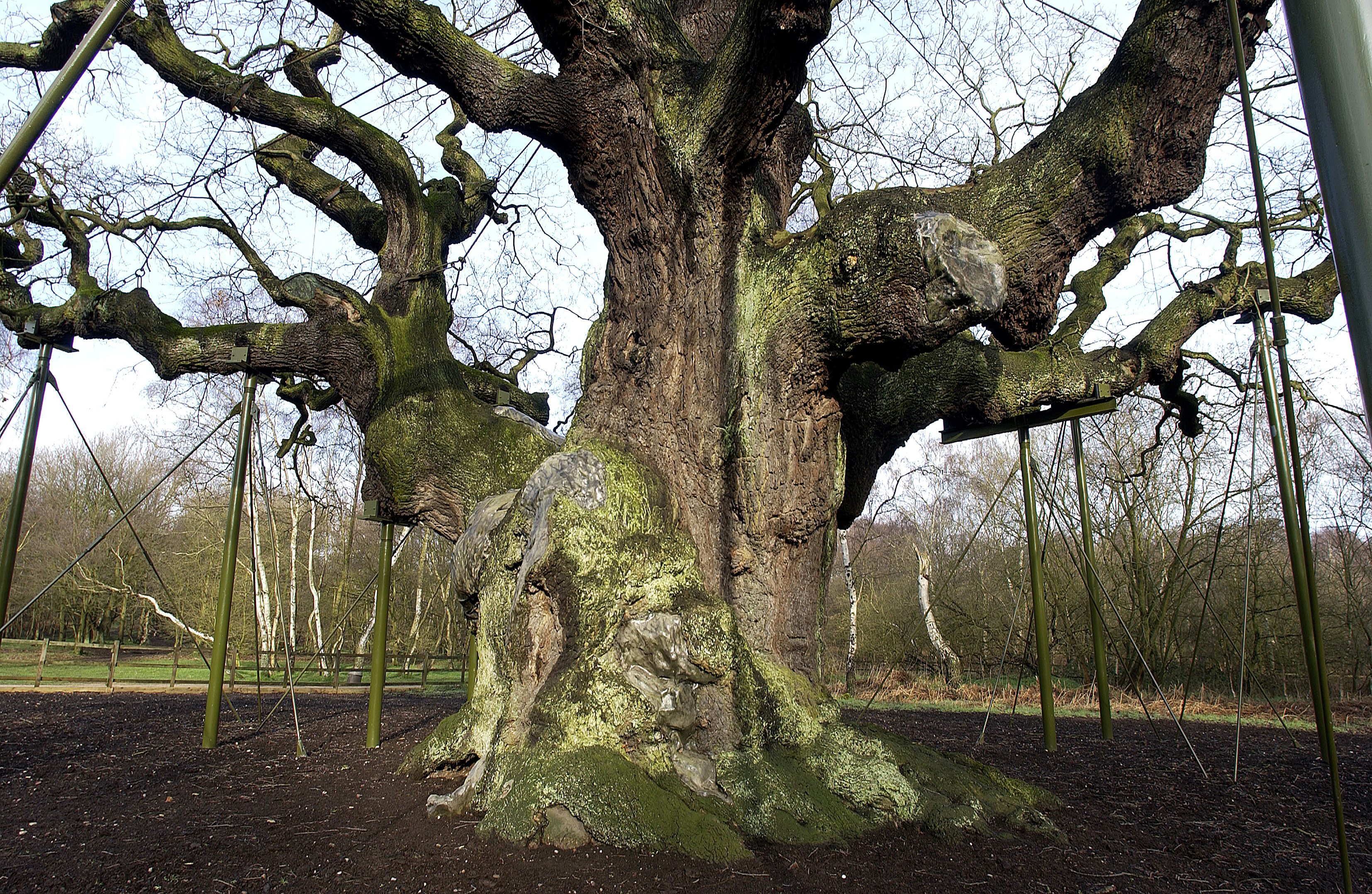How to measure the girth of a tree
Where on the tree do I measure?
For trees with a single stem (trunk) always measure at a height of 1.5m above ground level.
- Make sure the tape is level.
- Don't presume the first attempt is correct - measure a couple of times to make sure.
- Record the girth in metres and centimetres.
- Ensure the measuring tape is flat against the trunk and not twisted.
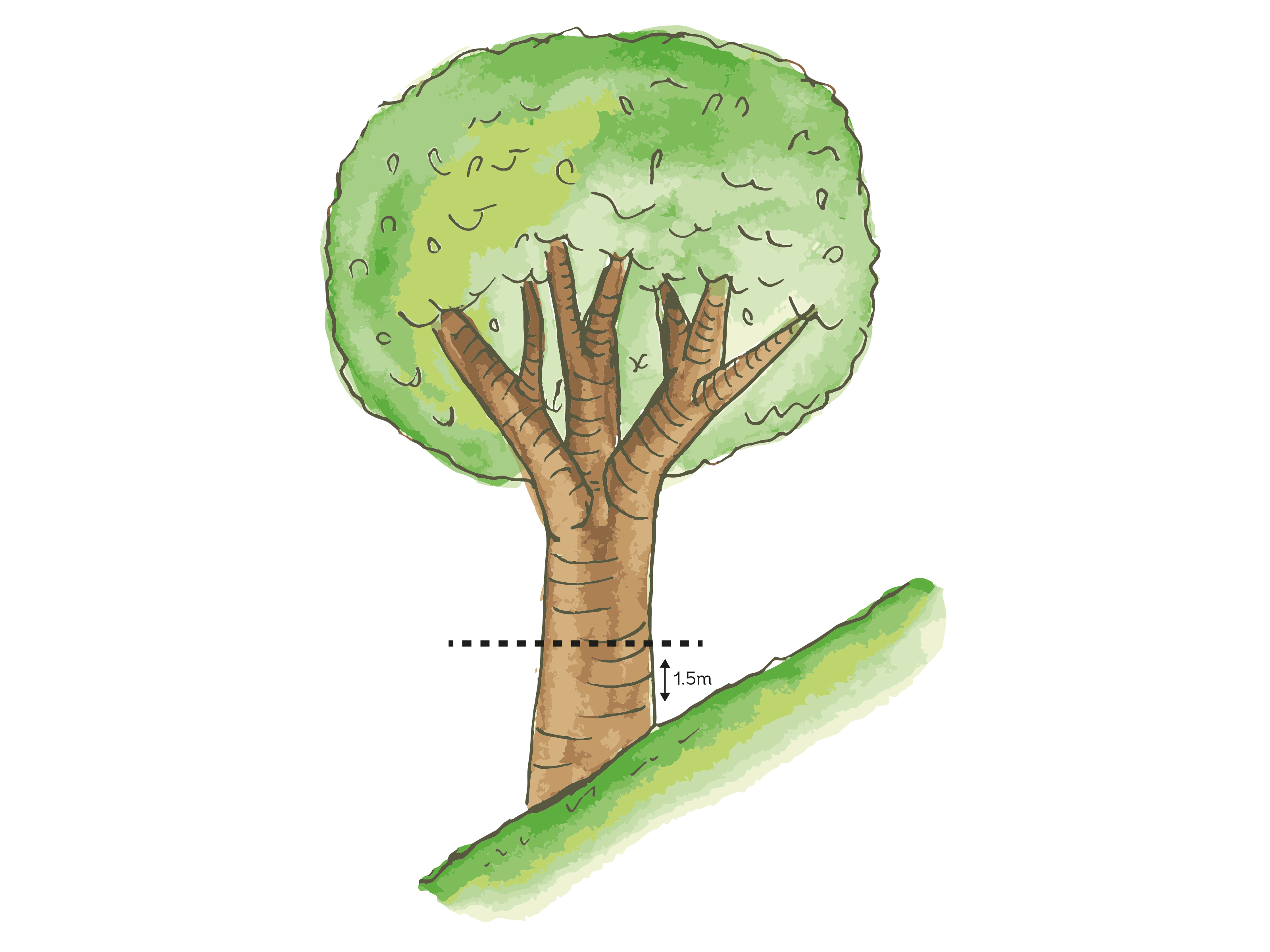
Tree on sloping ground
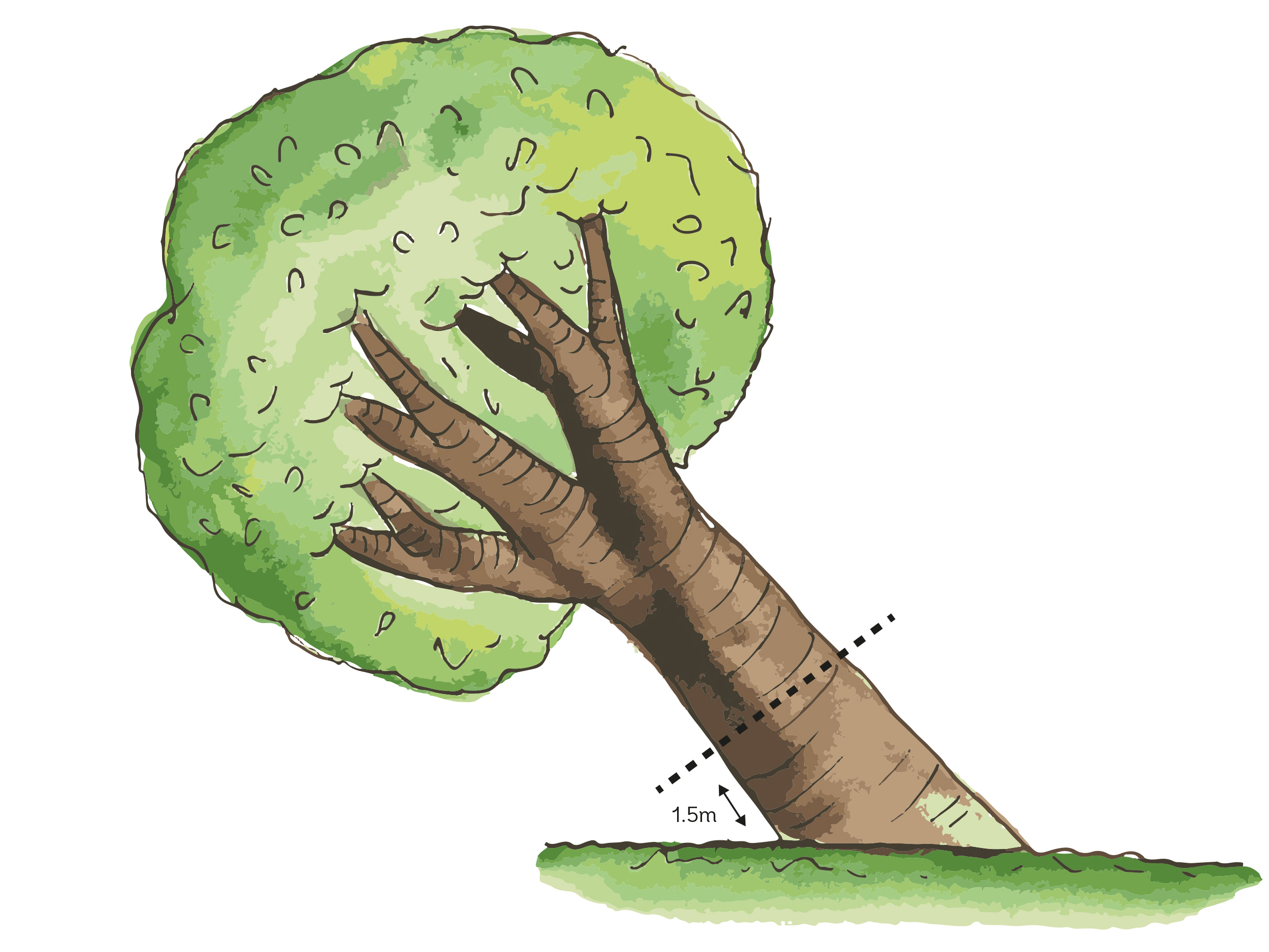
Leaning tree
How do I measure a leaning tree?
A leaning tree should always be recorded by measuring 1.5m up the underneath side.
Follow all other points as if measuring a standing tree.
How do I measure a tree on sloping ground?
Measure at a height of 1.5m from the ground on the upper side of any slope or the highest part of the ground if it’s uneven.
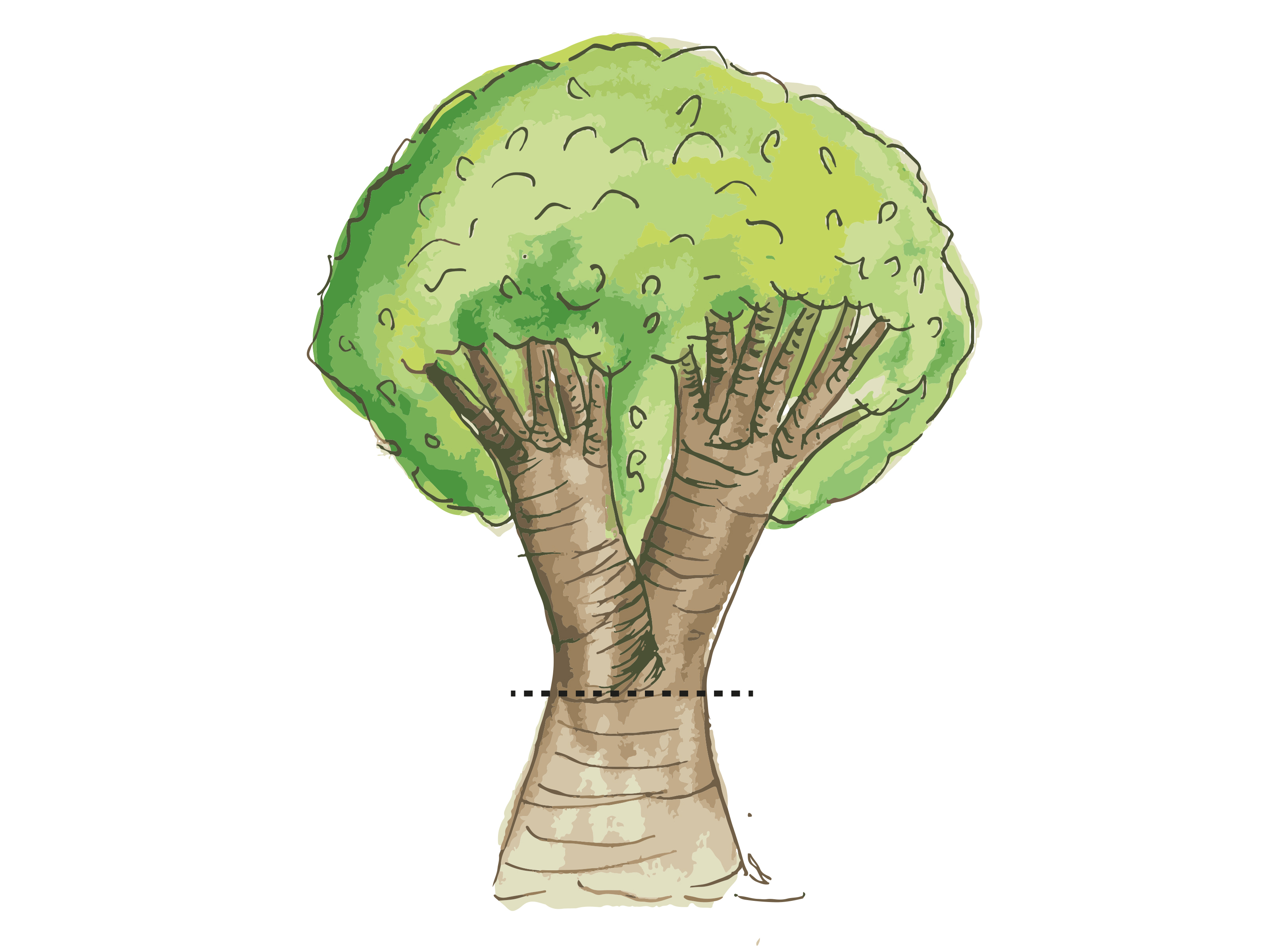
Tree fork below 1.5m
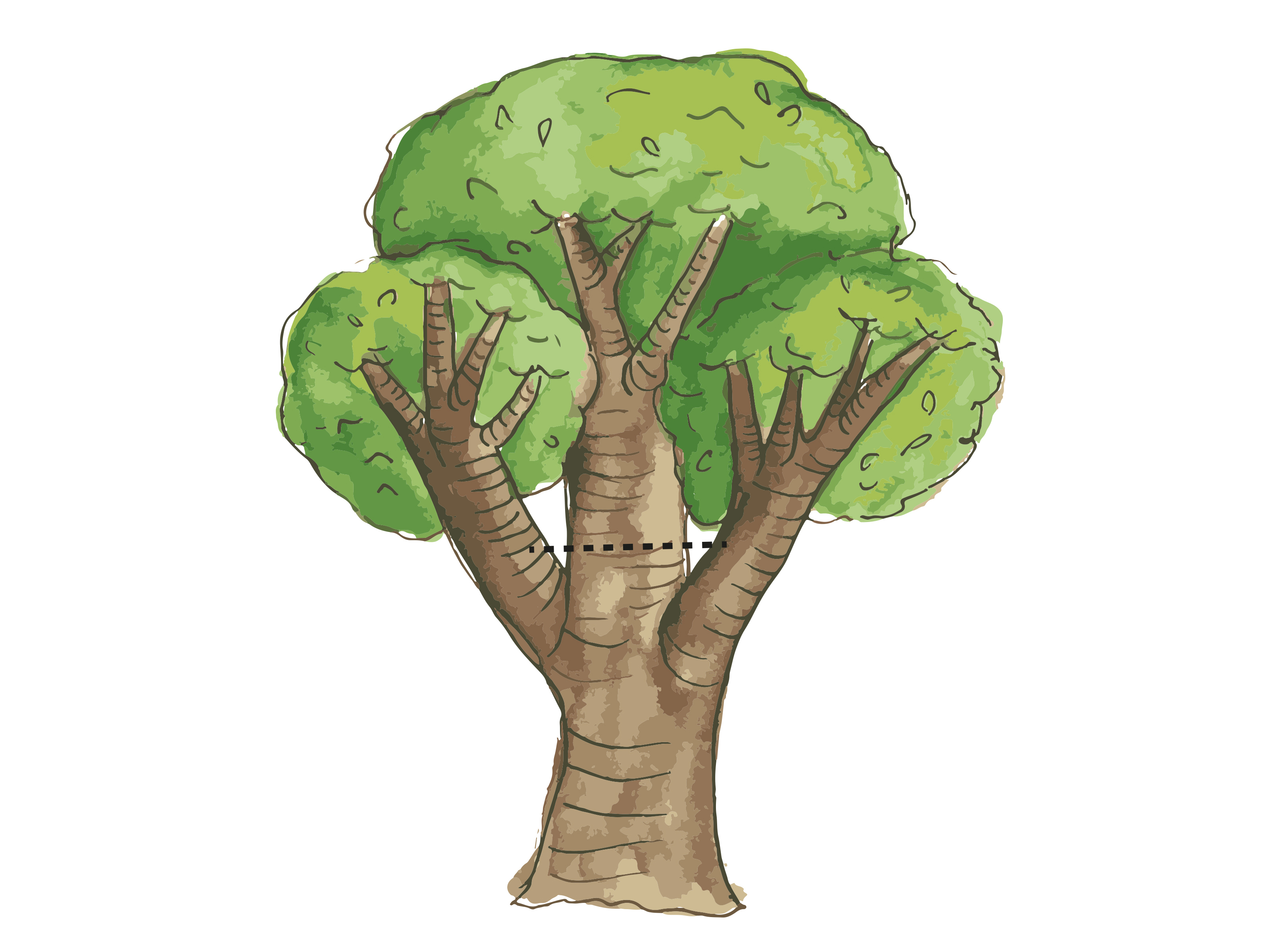
Tree fork at 1.5m
What do I do if the tree forks at 1.5m?
If the tree forks or abnormally swells at or below 1.5m from ground level record the trunk at its narrowest point below 1.5m. Remember to note the height at which the measurement was taken.
What do I do if the tree forks below 1.5m?
Try to record the girth where it has a clean unbranched trunk, either above or below 1.5m. If the branches are very low but have a gap above you may still be able to record at 1.5m, but if you can’t, remember to record the height at which you measured.
A tree that forks low down may be multi stemmed – see below.
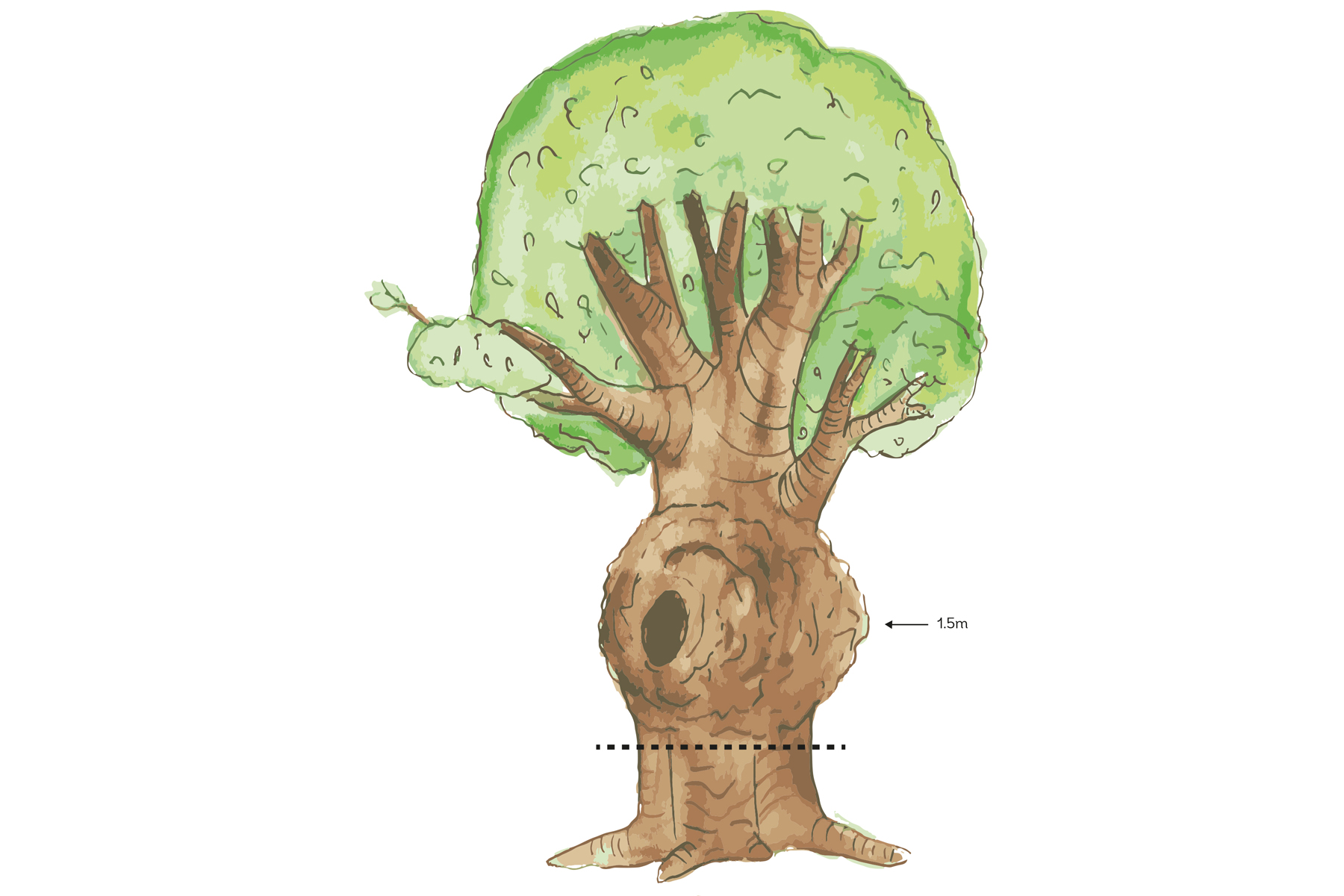
Bureed, knobbly tree
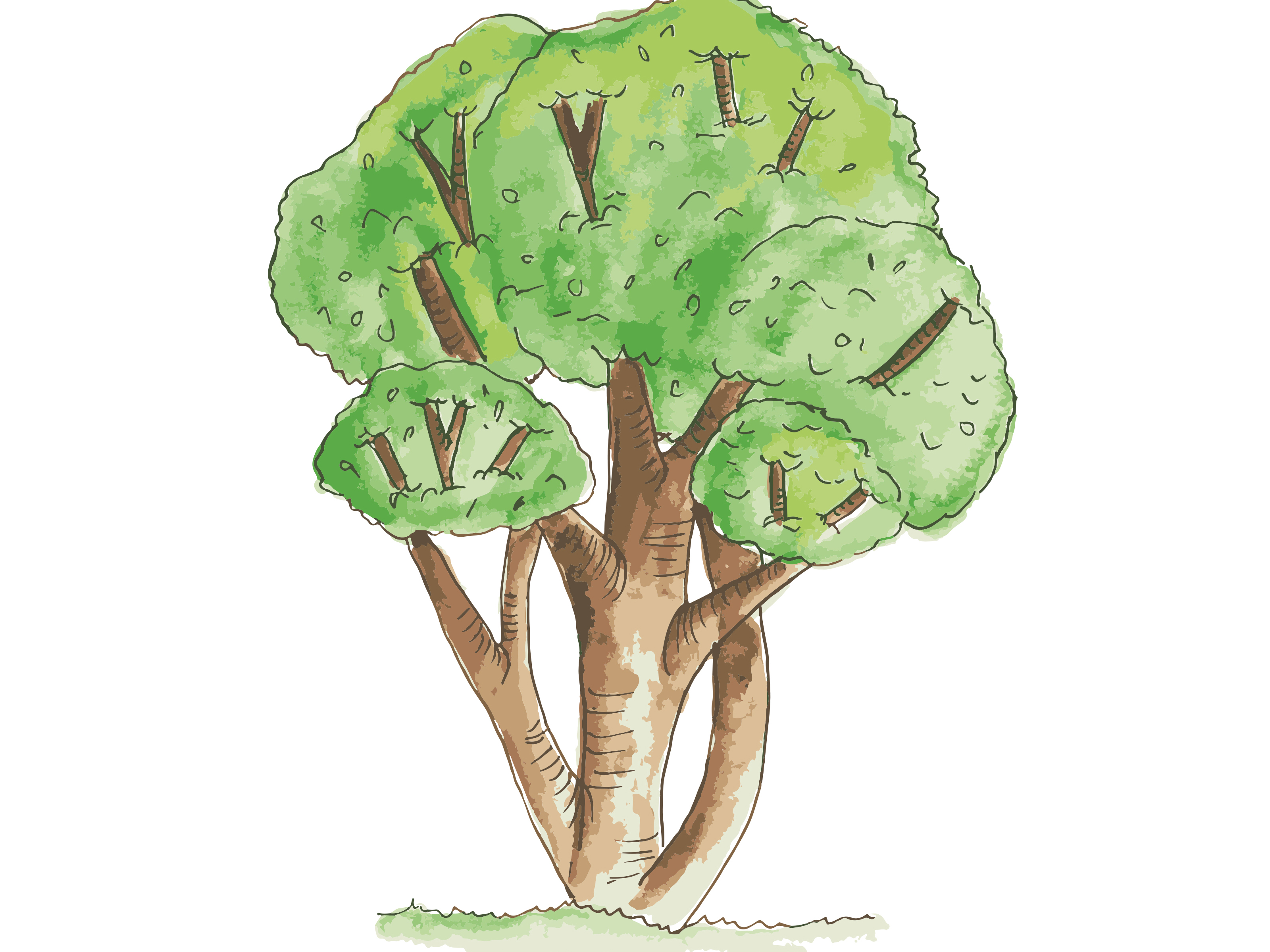
Multi-stemmed tree
How do I measure a burred or knobbly tree?
If the tree has burrs or swellings at 1.5m put the tape around the stem at various points below 1.5m to find the smallest girth.
Keeping the tape level may include burrs which exaggerate the girth. In this situation it’s okay if the tape is not level; this might allow you to avoid the burrs and measure the smallest girth.
Make a note of how you measured the tree in the comments field on the recording form.
How do I measure a multiple stemmed tree or coppice?
If the stems appear to grow from a single tree treat it as though measuring a single stem by finding and recording the smallest girth around all stems at 1.5m or below. Coppice should be recorded in this way.
If the stems arise close to the ground and it appears as though the stems may not all be part of the same tree, each stem should be treated and recorded as an individual tree. If the stems are so close together that this isn’t possible, measure the smallest girth around all of the stems.
Make a note of how you measured the tree in the comments field on the recording form.
Can I estimate the girth of the tree?
Estimate the girth of a tree when it is: growing on private property, within a hedge, surrounded by dense undergrowth, or on the opposite side of a ditch or river.
Try estimating the diameter of the stem and multiply by three.
